Porsche 928/928S/S4: Buyers guide
 Buyer's guide: Porsche 928
Buyer's guide: Porsche 928
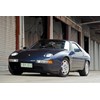
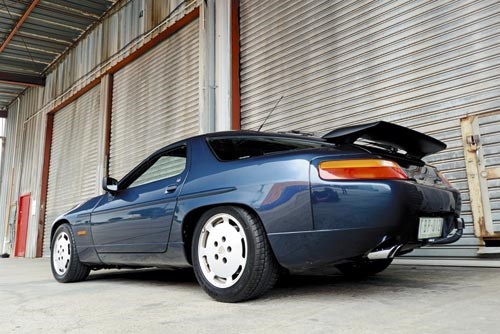 Buyer's guide: Porsche 928
Buyer's guide: Porsche 928

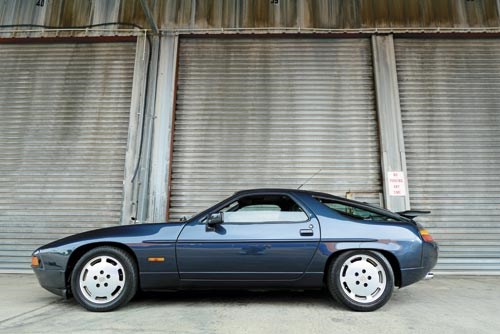 Buyer's guide: Porsche 928
Buyer's guide: Porsche 928

 Buyer's guide: Porsche 928
Buyer's guide: Porsche 928
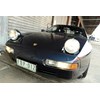
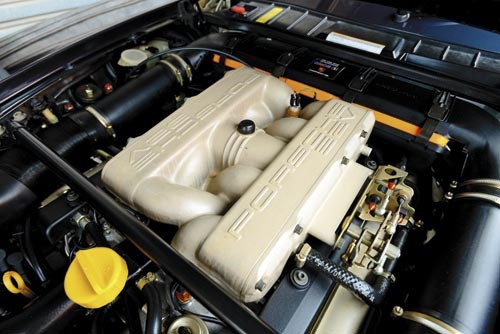 Buyer's guide: Porsche 928
Buyer's guide: Porsche 928

 Buyer's guide: Porsche 928
Buyer's guide: Porsche 928

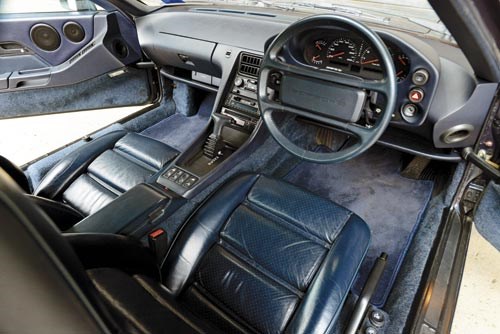 Buyer's guide: Porsche 928
Buyer's guide: Porsche 928

 Buyer's guide: Porsche 928
Buyer's guide: Porsche 928
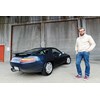

|
|
Buyer's guide: Porsche 928
|

|
|
Buyer's guide: Porsche 928
|

|
|
Buyer's guide: Porsche 928
|

|
|
Buyer's guide: Porsche 928
|

|
|
Buyer's guide: Porsche 928
|

|
|
Buyer's guide: Porsche 928
|

|
|
Buyer's guide: Porsche 928
|

|
|
Buyer's guide: Porsche 928
|
The Porsche 928 turned things on its head by featuring a bent-eight up front, its performance and engineering quality make it a hugely rewarding but at stupidly cheap prices...

|
|
Buyer's guide: Porsche 928
|
PORSCHE 928
The Porsche 928 was born, as Porsches of the 1970s and ‘80s were, out of fear that buyers would reject the rear-engined 911 or legislation might even ban it from sale.
US deliveries were the life-blood of Porsche and safety concerns were too serious to ignore. The company already had the basic design in the shape of its 924, so expanding the concept to accommodate a V8 engine and lots more luxury was less confronting than beginning with a clean sheet of paper.
The 928 displayed at the 1977 Geneva Motor Show was a car laden with compromise. Engineers had argued about it being mid-engined and whether it would be better off with a V10 engine than the eventual 4.4-litre V8.
Porsche would have liked the car to comfortably accommodate four adults but that would make it longer and ungainly. A one-off four-seater built for Ferry Porsche in 1984 proved the detractors had been right.
At 1310mm the 928 stood barely at chest height. Surprisingly for its bulk it weighed 1547kg; the engine block, some suspension parts and most of the body panels made from pressed alloy around a galvanised steel structure.
Australia saw its first 928s during February 1978 and at a basic cost of almost $53,000. Putting that in context, a 450SLC Benz cost $1000 more but a V12 XJS Jaguar was only $39,950.
Those words ‘basic cost’ are pivotal because you could spend a lot more than 53 Grand by digging into the 928 options box.
The 4.4-litre cars came with five-speed manual transmission or, at $2063 extra, a three-speed automatic that in 1984 made way for a four-speed. By 1982 all cars being brought into Australia had air-conditioning complementing their power windows, central locking and headlight washers. Leather trim, included in the cheaper Jaguar XJS, and the sunroof that by the 1980s was so fashionable were extra-cost options.
Porsche has been stung by criticism of its new car’s lacklustre performance, especially when its liking for fuel was added to the equation. After only two years in the market an enlarged 4.7 litre engine was offered and the 928S joined the ranks of serious supercars.
Selling for approximately $10,000 more than a basic car, the ‘S’ was identified by spoilers front and rear and new 16-inch wheels replacing the original ‘telephone dial’ rims. A remodelled bumper helped smooth the nose and a wing that followed the hatch contour helped generate rear downforce.
928 sales remained at around 3500 per year until 1987, when an S4 version was introduced. Incorporating the car’s first significant restyle in ten-years, the S4 also delivered more power via a redesigned 5.0-litre engine, improved clutch action and improved braking. Fear of engine damage due to Australia’s lower-grade Unleaded fuel saw local cars restricted to 221kW while European deliveries had 236kW.
Saving the best for last, Porsche in 1989 introduced a GT version of the 928 and in 1992 the 5.4-litre GTS. Australian-spec cars were priced from $201,000 to more than $240,000 but came packed with features including climate-control air-conditioning, ABS, leather seats with power adjustment, a CD player, trip computer and central locking.
Cars in the USA sold after 1990 had dual air-bags but other markets only offered a driver’s side bag. The sunroof also remained an extra.
ON THE ROAD
The opportunity to drive any Porsche should be savoured I suppose, but coming away from an interlude with an early manual 928S left little incentive to sample another. Then a super-rare 928GTS came along.
It had, according to the dealer, been delivered originally to a high-profile business person. 8000 or so kilometres showing when the dash was illuminated confirmed it had been used sparingly.
With no autobahn nearby, the 5.4-litre Porsche’s cruising ability couldn’t be explored but bursts to the vicinity of 100km/h came easily and confirmed that just a hint of throttle would provoke an instant response from the last of the ‘land sharks’.
The manual car had been like a bucking bronc at suburban speeds, with an uncooperative clutch and lifeless steering – both typical I’m told. Most disconcerting, and an ongoing concern if you’re considering any 928, was the cave-like cabin and restricted peripheral visibility.
Even with the optional passenger side mirror properly adjusted there was always a chance of something sneaking into the blind-spot.
Porsche restoration specialist David Belford has experienced similar misgivings when driving other Porsches and believes it can be seen as endemic to the brand.
"If Porsche builds a Le Mans car it will work brilliantly at Le Mans but not so well on other tracks," he said. "If they build a rally car it may not work on a circuit and the same applies to the 928. These were intended to be the best long-distance cruiser in the world; able to sit at near maximum speed on an autobahn or freeway without fuss but not as good around the suburbs."
Checking the specifications for the later S4 series reveal just how aligned the 928 design was to long-distance touring. Early cars came with an already tall 2.75:1 rear axle ratio but that was eclipsed from 1983 by an extraordinary 2.2:1.
In pursuit of enhanced stability, Porsche’s engineers outdid themselves. Known as the ‘Weissach Axle’ the 928 rear-end acted as an early form of all-wheel steering that would also compensate for the oversteer caused by sudden deceleration mid-bend.
Early automatics were seen as slow, especially by Porsche devotees who had slipped out of a 911. The 4.4-litre automatic 928 took 7.7 seconds 0-100km/h and the clunky manual wasn’t a lot faster. The S4 cut it to 6.4 seconds and the 5.4-litre GTS to a very handy 5.9.
Nobody really asks the question about fuel economy but if it matters a local road tester in mostly open-road running achieved 16L/100km. In traffic and suburbia, expect around 20L/100.
BUYING
Look at the majority of 928s available in the used market and you would wonder why everyone doesn’t own one.
Where an average 1980s 911 will cost around $40,000, a 928 or 928S in similar condition can be found at half the 911’s price.
"The 928 is so complex and so expensive to dismantle and rebuild that restoring a cheap, neglected car isn’t viable," Porsche expert David Belford warns. "The only strategy when looking for one of these cars is to buy the very best you can afford."
That may mean buying an early car when you really want a later model. An S4 with plenty of problems can swallow more than its purchase price in essential repairs.
If luxury is your motivation, go for an S4 or GTS. These came with more high-quality equipment as standard and hopefully had owners who could afford rigorous maintenance during the early years of their lives.
Prices for older, lower-spec models begin below $10,000 and those are best regarded as sources of spare parts. Spending $25,000 should fund something in reasonable condition, with high-quality S4s at around $40,000. Some GTS vendors have sought more than $80,000 but $60-70,000 seems more viable for very good cars.
Skimping on professional inspection of any 928 is insane. Even if all the documents are there and the car has apparently been scrupulously serviced have it checked by a Porsche specialist before buying.
I OWN ONE...
David Belford eats and sleeps early Porsche via his Classic Road & Track restoration business in North Melbourne and is not normally a fan of the front-engined models.
However when offered a 928 S4 that had travelled just 43,000km during almost 25 years his resolution wavered.
"I don’t usually get excited about the modern stuff but this is a special car," David enthused. "It has the service records and from that we know it has done just 300 kilometres in the past eight years. In many respects it could be a showroom car but it still needed a week detailing the paintwork to bring it up to perfect."
David also sent the car to Porsche Melbourne to have the timing belt replaced – an essential investment for anyone who buys a 928.
"With quad cams and such a complex motor, failure of the belt will write off the majority of surviving 928s as the repair cost will exceed their value," he said.
BUYER'S CHECKLIST
Body & Chassis
Major parts of the 928 structure are zinc-dipped steel or aluminium alloy so rust isn’t a huge problem. However, if it does exist, it will be difficult to spot. Used imports that were sold new in the Northern Hemisphere must go onto a hoist for an underbody inspection. Worn hatch seals can cause annoying screeches and rattles from the rear and worn hinges can allow those long doors to drop. Ensure that the hideaway lights activate quickly.
Engine & Transmission
Rebuilding a 928 engine can cost more than some complete cars so any hint of smoke from the exhausts, leaking oil or overheating denotes a car to absolutely avoid. One with a documented and complete engine rebuild is best. Unless the cam-drive belt has been replaced during the past 12 months, spend $1000 and get it done as a breakage will destroy the entire motor. If the car overheats after idling, suspect the viscous coupling that activates the engine fan. Clutch shudder is common, clunky shift action fairly standard.
Suspension & Brakes
Low-value/high maintenance cars like the 928 frequently suffer neglect and the suspension is an area where cash-strapped owners attempt to save money. Accessing the ride height adjustment can compensate for sagging springs but new ones and a good set of shock absorbers will eventually be required. Porsche spec Boge shocks are quoted at $220-300 each – about half the price of Bilsteins. If the car ‘rear steers’ more than you feel it should, an inspection may reveal plenty of worn and costly parts. Brake upgrade kits can cost $2500 but are worthwhile if all the rotors are due for replacement.
Interior & Electrical
Virtually everything inside a 928 is available; including seat and carpet retrim kits but costs can be prohibitive. Find a car with serviceable seats and make sure the powered adjusters, where fitted, aren’t jammed. Check the air-conditioning works properly as repairs cost a fortune. Power windows, central locking systems and the sunroof mechanism have all been around for at least 20 years and are prone to failure.
SPECIFICATIONS
Porsche 928/928S/S4
Number built: 61,056
Body: Galvanised steel with steel and alloy panels, integrated body/chassis two-door coupe
Engine: 4.4, 4.7, 5.0, 5.4-litre quad-camshaft V8 with fuel injection
Power: 235kW @ 6000rpm
Torque: 428Nm @ 3700rpm (928 S4)
Performance: 0-100km/h 6.3 seconds, 0-400m 14.5 seconds (928 S4) gearbox five-speed manual, three or four-speed automatic
Suspension Front: independent with upper transverse-links & lower trailing-arms, coil-springs, tubular shock-absorbers & anti-roll bar. Rear: independent with upper-links, lower A-arms, coil-springs, tubular shock-absorbers and anti-roll bar.
Brakes: disc front/disc rear, power assisted, post-’89 with ABS
Tyres: 225/50VR 16 & 245/45VR 16 (928 S4)
2014 PRICE RANGE $4000-45,000 (928-928 S4) $35,000-75,000 (928GT/GTS)
Contact: Porsche clubs throughout Australia www.landsharkoz.com
*****
More reviews:
Search used:
>> Search Porsche cars for sale
Unique Cars magazine Value Guides
Sell your car for free right here
Get your monthly fix of news, reviews and stories on the greatest cars and minds in the automotive world.
Subscribe

.jpg)










.jpg)

